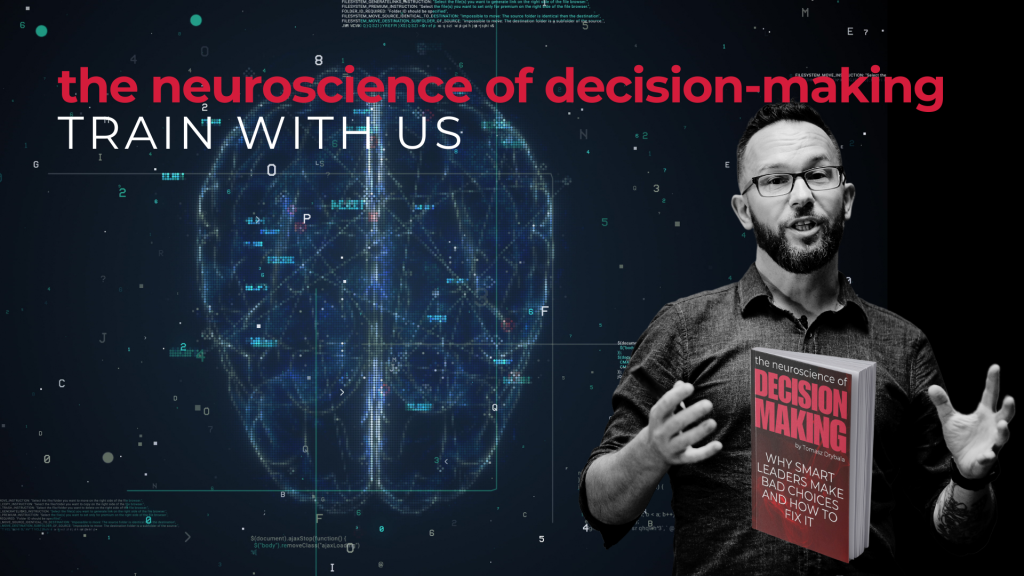Leadership often demands boldness. The ability to make decisive, high-stakes choices can drive innovation, inspire teams, and secure competitive advantage. Behind these bold moves, adrenaline—often called the “fight-or-flight” chemical—plays a critical role. It fuels energy, heightens focus, and creates the sense of urgency leaders need to act quickly under pressure.
Adrenaline can feel like the ultimate ally. It’s the surge that propels you to make bold calls in moments of uncertainty, inspiring confidence in your ability to navigate complexity. But as empowering as adrenaline may feel, it has a lesser-known side that can quietly steer you toward riskier decisions without the careful analysis they require.
The Neuroscience of Risk: How Adrenaline Shapes Decisions
Adrenaline evolved to help us respond swiftly in high-stakes scenarios. When adrenaline is released, it amplifies focus and provides the energy needed to act decisively. This is why, as leaders, we often associate adrenaline-fueled moments with clarity and confidence. However, the same chemical rush that sharpens our instincts can distort our judgment.
In the heat of the moment, adrenaline minimizes perceived risks and magnifies the appeal of bold, dramatic moves. This isn’t a conscious choice—it’s your brain responding to the chemical signals that prioritize action over deliberation. The result? Decisions that feel urgent and necessary at the time but may later reveal themselves to be impulsive or ill-considered.
Recognizing Adrenaline’s Hidden Influence
Adrenaline doesn’t announce its presence. Instead, it subtly influences decision-making by creating a sense of urgency that overrides careful thought. Have you ever felt like a decision couldn’t wait—that you had to act immediately? That urgency might have been adrenaline whispering, “Take the leap.”
It can also show up in your preference for high-stakes moves. Adrenaline thrives on excitement, making bold actions feel not only possible but preferable, even when safer, more measured alternatives exist. This dynamic can lead to overlooking risks or dismissing input that challenges your initial instincts, narrowing your perspective at the moment you need it most.
When Boldness Becomes Blindness
The allure of adrenaline-fueled confidence can come at a cost. Over time, repeated reliance on adrenaline to drive decisions can create patterns where risks are consistently underestimated, and critical analysis takes a back seat. This doesn’t just impact individual decisions—it affects the broader culture of your leadership, where the thrill of bold moves overshadows the need for collaboration, foresight, and adaptability.
It’s not that boldness is inherently bad; boldness is essential. But when it’s not balanced with strategic thinking, it can lead to unnecessary costs, missed opportunities, and strained relationships within teams.
Striking a Balance: Adrenaline as a Tool, Not a Driver
Leadership isn’t about eliminating adrenaline—it’s about harnessing it. To ensure adrenaline works for you rather than against you, start by creating space between the rush of urgency and the final decision. A deliberate pause, even if brief, can help you assess whether your confidence is rooted in careful evaluation or simply the chemical high of adrenaline.
Take time to evaluate risks clearly, even when the adrenaline rush makes them feel small or insignificant. Writing down potential challenges or alternative options can ground your thinking, ensuring you don’t dismiss important details in the excitement of the moment. Finally, surround yourself with trusted advisors or team members who can act as a counterbalance, offering perspectives that challenge your instincts and widen your view.
Leading with Confidence and Clarity
Adrenaline is part of what makes leadership dynamic and exhilarating. It’s the spark that drives decisive action, but it’s also a force that needs to be managed carefully. By recognizing its influence, pausing to reflect, and actively seeking balance, you can channel adrenaline into thoughtful, impactful leadership.
This delicate balance is the hallmark of high-performing leaders who understand that confidence and caution can coexist. It’s not about dampening your instincts—it’s about ensuring they’re supported by analysis, collaboration, and foresight.
Train with us: Neuro-Based Leadership Centre

